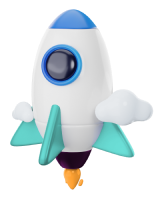 Abby Fields
Abby Fields Branded Content Specialist
Branded Content Specialist
 October 27, 2021
October 27, 2021 8 minute read
8 minute read- 艾比是一个数据驱动的内容与certif营销人员ications in inbound marketing and content marketing. She’s written hundreds of articles covering digital marketing topics — a few of her specialties include first-party data, marketing and data analytics, marketing strategy optimization, and SEO. When she isn’t writing or optimizing content, Abby loves to spend time reading the latest mystery novel, having movie marathons with lots of snacks, and jamming out to Shania Twain.
Definition:A target audience is the intended recipient of an organization’s message, product, or services. Typically, target audiences get defined by behavioral or demographic data.
Learning the definition of target audience is just the beginning in using target audiences to improve your marketing campaigns and marketing return on investment (ROI).
Keep reading this target audience guide to learn:
- What is a target audience?
- How to find your target audience
- How are target audiences defined?
- What are the types of target audiences?
- Why is identifying your target audience important?
For advice that goes beyond target audience’s meaning,check out Revenue Weekly!
Don’t miss our Marketing Manager Insider emails!
Join200,000smart marketers and get the month’s hottest marketing news and insights delivered straight to your inbox!
Enter your email below:
Inline Subscription Form – CTA 72
“*” indicates required fields
(Don’t worry, we’ll never share your information!)

What is a target audience?
A target audience is your potential clients, or the consumers most likely to be interested in and purchase your products and services. In other words, it’s the people you want to promote your products or services to maximize your sales and revenue.
Why is identifying your target audience important?
Identifying your target audience and understanding their interests is one of the most crucial aspects of your marketing strategy.
Here are a few significant benefits of identifying your target audience:
- Improve ROI:了解你的目标受众可以帮助您创建年代uccessful marketing campaigns and strategies that will drive results for your business. As a result, you will spend less money on the strategies that don’t work, increasing your overallreturn on investment (ROI)from your marketing campaigns.
- Create personalized marketing messages:消费者更有可能点击advertisements that resonate with their interests and concerns. By identifying and understanding your target audience, you cancreate personalized marketing messagesthat attract more potential customers.
- Increase sales and revenue:Identifying your target audience enables you to successfully promote your products and services to the right customers interested in your brand. As a result, your business will enjoy aboost in sales and revenue.
Knowing your target audience will allow you to promote your products and services to the consumers who matter the most and is the best way to boost the success of your business.
How to find your target audience
Now let’s discuss how to find your target audience and increase sales and revenue for your business:
- Look at your existing customer base
- Put yourself in your customer’s shoes
- Scope out the competition
- Analyze consumer data and behavior
1. Look at your existing customer base
If you’re unsure how to identify your target audience, you can look at your existing customers.
Looking into who already purchases your products and services can give you valuable insight into the types of consumers you should be targeting with your marketing campaigns.

You can take a look at things like their age, location, and their interests.
One of the best ways to evaluate your existing customers is toconduct surveysand add a few questions about your customer’s demographics or interests.
After purchasing a product, you can ask customers for feedback or conduct surveys on social media platforms to learn more about your current customers. You’ll gain some valuable feedback about your products and youruser experience.
2. Put yourself in your customer’s shoes
The second step is to try to see things from your customer’s perspective.
Sometimes, an excellent way to find your target audience is to put yourself into your customer’s shoes to understand their perspective.
To successfully promote your brand to consumers, you’ll want tounderstand their problems and concerns, pain points, and wants and needs. Think about your products and the benefits they can provide to consumers. Ask yourself:
- What problem is this product solving?
- Who would be interested in this product?
- Who could benefit the most from this product?
- What concern is this product solving?
Use your answers to these questions to help you find your target audience and identify the consumers who would have the most interest in purchasing your products and services.
3. Scope out the competition
It’s always good practice to continuouslykeep tabs on your competitors. You can also scope out the competition to help you find your target audience.
By researching who your competitors are promoting their products to and how they go about it, you can identify the types of consumers you should be targeting. As a bonus, you can find opportunities for how your business can fill in the gaps.
If your competitors are missing out on targeting a specific group, you can develop marketing strategies for those consumers to stay one step ahead.
You might also identify opportunities to further develop your digital marketing campaigns tooutshine the competition.
4. Analyze consumer data and behavior
Consumer data platformsand tracking tools are handy for helping you learn more about your customers and learn which types of consumers are spending the most time on your website and making purchases.

With tools likeGoogle Analytics, you can view information about your audience, such as demographic data, which content is the most popular, and which pages they spent the most time on.
This data can help you evaluate the types of consumers who are interacting with your brand the most and better understand the content that resonates with them so that you can learn more about their interests.
With all-in-one marketing software likeMarketingCloudFX, you cantrack consumer dataand behavior, as well as view which marketing campaigns are driving results for your business, how leads arrive at your site, and more.
Essentially, you can identify your target audience and track your marketing strategies in one place.
How are target audiences defined?
Target audiences are the key todeveloping personalized campaigns and marketing messagesthat will resonate with consumers and entice them to purchase your products and services.
So how are target audiences defined? You can distinguish them by several characteristics, such as:
- Demographics
- Interests
- Hobbies
- Buying decisions
Now let’s take a deeper dive into target audiences by exploring the different types and some examples to fully understand how you can use them to strengthen your marketing campaigns.
3 target audience types to know
In marketing, there are several ways you can distinguish target audiences. When creating your marketing campaigns, you may want to target specific consumers depending on the product or service.
This process of breaking down your target audience into different categories based on their interests or demographics is calledcustomer segmentation.
You can use just one or multiple types of target audiences to create effective campaigns.
让我们来看看几个目标受众类型nd categories you may want to use to distinguish your audience further:
1. Demographic

One way you can categorize your target audience is by usingdemographic data. This type of target audience uses demographic data such as age, location, gender, income, and education to categorize potential consumers.
With demographic data, you could target your marketing campaigns towards young women between the ages of 18-24, men and women around your local community, or families with an income above $50,000.
2. Psychographic
You can further categorize your target audience bypsychographic data.
This type of data can include distinguishing your audience by their opinions, hobbies, and passions. You can look at their favorite movies and books, music, or hobbies such as dancing or running.
By understanding your consumer’s interests, you can developpersonalized marketing messagesthat speak to their hobbies and passions.
When consumers view an advertisement about something they are personally interested in or that evokes some type of emotion, they will be more likely to click and potentially make a purchase. In fact,77% of consumerschoose, recommend, or pay more for brands that provide a personalized experience.
3. Purchase Intent
Categorizing a target audience by their purchase intent is incredibly useful for businesses to target consumers looking to purchase a specific type of product.
By using this type of target audience, you can show off the value of your products and services to consumers looking for the products you sell.
Good agencies have more than 50 testimonials.
Great agencies have more than 100 testimonials.
WebFX hasover 1000+glowing client testimonials.
See What Makes Us Stand out

What is a target audience in marketing? Your pathway to a higher ROI.
Identifying your target audience is essential to develop successful marketing strategies that will promote your products and services to the consumers who are most likely to make a purchase.
That’s where WebFX comes in.
Ouraward-winning teamhas over 25 years and 1.6 million hours of experience helping our clients find and reach their target audience with effective marketing campaigns that drive revenue for their business. If that’s not convincing enough, check out ourreviews and testimonialsto learn more about what makes WebFX stand out.
Are you ready to find and reach your target audience?
Speak with one of our expert strategists by calling888-601-5359orcontact us onlineto start driving revenue for your business.
-
 艾比是一个数据驱动的内容与certif营销人员ications in inbound marketing and content marketing. She’s written hundreds of articles covering digital marketing topics — a few of her specialties include first-party data, marketing and data analytics, marketing strategy optimization, and SEO. When she isn’t writing or optimizing content, Abby loves to spend time reading the latest mystery novel, having movie marathons with lots of snacks, and jamming out to Shania Twain.
艾比是一个数据驱动的内容与certif营销人员ications in inbound marketing and content marketing. She’s written hundreds of articles covering digital marketing topics — a few of her specialties include first-party data, marketing and data analytics, marketing strategy optimization, and SEO. When she isn’t writing or optimizing content, Abby loves to spend time reading the latest mystery novel, having movie marathons with lots of snacks, and jamming out to Shania Twain. -
 WebFX is a full-service marketing agency with 1000+ client reviews and a 4.9-star rating on Clutch! Find out how our expert team and revenue-accelerating tech can drive results for you!Learn more
WebFX is a full-service marketing agency with 1000+ client reviews and a 4.9-star rating on Clutch! Find out how our expert team and revenue-accelerating tech can drive results for you!Learn more
Try our free Marketing Calculator
Craft a tailored online marketing strategy! Utilize our free Internet marketing calculator for a custom plan based on your location, reach, timeframe, and budget.
Plan Your Marketing Budget

Maximize Your Marketing ROI
Claim your free eBook packed with proven strategies to boost your marketing efforts.
Get the GuideTry our free Marketing Calculator
Craft a tailored online marketing strategy! Utilize our free Internet marketing calculator for a custom plan based on your location, reach, timeframe, and budget.
Plan Your Marketing Budget
What to read next







